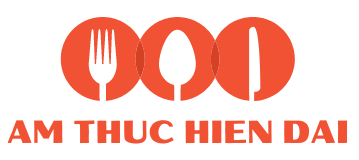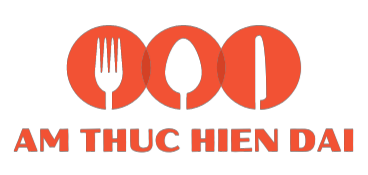When you think about French wine, there’s a big chance that the first thing that will come to your mind is Red Bordeaux Wine.
Names like Château Margaux , Château Pétrus and Saint Émilion have been the flag-bearers of French excellence in wine on the international stage for decades.

That being said, as a French person born in Alsace, I have, in all honesty, never been particularly appealed by Bordeaux Wine—not only because we also produce excellent wines in my area.
Like many French people, I find it challenging to discover great value-for-price wines from Bordeaux without a deep knowledge of the area, while many other regions of France also produce great wines.
That’s why, before visiting both Bordeaux and Saint Emilion, I was asking myself: Why are Bordeaux wines so famous?
At the end of our trip, I had tasted great wines and had a few good answers to that question.

1. Because Bordeaux is the biggest and oldest wine-producing region in France?
An easy answer to the popularity of Bordeaux wines would be: France is the largest wine producer in the world (it was in 2023), and Bordeaux is France’s oldest and biggest wine-producing region, so it makes sense that their wine is famous.
But… that’s wrong on both counts!

The origin of wine in France has nothing to do with Bordeaux.
The oldest vineyard in France appeared in the sixth century BC in a settlement of Greek immigrants from Phoenicia located near what is now Marseille.
Meanwhile, the Bordeaux vineyard, similar to that of other French regions like Burgundy, did not emerge until the 1st-2nd century AD. So, it is not the oldest vineyard.
Bordeaux is far from being the largest wine-producing region in France.
The Bordeaux region covers approximately 120,000 hectares (about 296,000 acres) of vineyards. This area is divided into several sub-regions, including Médoc, Saint-Émilion, and Pomerol, each with its own unique characteristics and grape varieties.

In contrast, Languedoc-Roussillon is the largest wine-producing region in France, encompassing about 250,000 hectares (approximately 618,000 acres) of vineyards.
If you have never heard of it, it’s likely because Languedoc-Roussillon has historically been associated with bulk wine production, but in recent years, it has gained recognition for its quality wines.
2. Because Bordeaux wines are the best?
Bordeaux has been making great wines for centuries, but saying they’re the best in the world might be a stretch.
Sure, Bordeaux has beautiful terroirs, great climates, and talented winemakers, but there are other places around the world that excel at winemaking too.

Taste is also, of course, a very individual perception, and:
- If price were the measure of quality (which I do not believe), the very best wines from Burgundy, such as Romanee-Conti, are indeed more expensive than those from Bordeaux.
- If some of the best wine experts had to blindly taste various top-quality wines from across the world, Bordeaux wine wouldn’t consistently rank first or even close!
A famous event demonstrated this in 1976 when a British wine merchant organized a blind tasting, putting some of the best Bordeaux red wines alongside California’s wines.
The jury, mostly composed of French experts, preferred the wines from California.
This episode became so controversial that it entered history as “The Judgment of Paris,” and a movie about it named “Bottle Shock” was even made.
3. Because of History?
If there is one specific area where only a few selected vineyards in the world can compete with Bordeaux, it is its rich history.

You may not know it, but Bordeaux has not always been part of France. In 1152, Eleanor of Aquitaine married Henry II, King of England, as her second marriage. This event created a political union between England and Aquitaine (the Bordeaux area) that led to a golden age for Bordeaux wine, fueled by wine exports to England.
Bordeaux eventually rejoined France and lost its privilege, but a second era of prosperity began in the 17th century, led by Dutch traders. Great merchants, they contributed significantly to the exportation of Bordeaux wines to northern Europe and later even further to America and India.
This wine trade created so much prosperity that the wine producers started to literally build castles next to their vineyards: the famous “Châteaux” of Bordeaux.

This is why the Clos d’Estournel, a very famous Château of Saint-Estèphe, is topped with pagodas in an Indian style.
4. Because of standards and classifications?
What is the best way to signal that your region is producing great wine?
Classify them with reliable criteria and make sure that only the best wines get granted the most prestigious “Appellation”.
This is what Bordeaux has been doing before everyone else. It all started in 1855 with the universal exhibition of Paris and Emperor Napoleon III asking wine merchants to set a reliable classification that would be clearly understandable by the public.
The Bordeaux Wine Official Classification was born :
- 60 red wines from the Médoc region and one from the Graves, Château Haut-Brion, were classified into five categories ranging from 1st Cru to 5th Cru.
- For the white wines, it is 27 sweet wines from the Sauternes and Barsac appellations which were classified between 1er Cru Supérieur, 1er Cru, and 2nd Cru.

This classification was a stroke of genius. Today it is still authoritative and the wines classified 1st Cru in it are among the most sought after.
5. Because of Robert Parker?
While it’s true that the Bordeaux Wine Official Classification tremendously helped Bordeaux to shine internationally, it’s not the only factor.
In fact, the 60s and 70s were really “mixed” decades for Bordeaux wine:
- Vineyards suffered from a lack of investment due to the consequences of WWII and the 1973 economic crisis.
- Poor weather conditions ruined several vintages.
- Several scandals affected Bordeaux’s reputation, like the 1973 “Winegate,” where one of the region’s largest producers was found guilty of doctoring inferior Bordeaux reds and Languedoc wines to sell them as superior Bordeaux.
Do you also remember the “Judgment of Paris” mentioned earlier in this article? It took place in 1976 – no surprise.
This sounds pretty bad, right?
True, but one man alone literally turned all of that around: Robert Parker.

This American, born in 1947 in Maryland, is the most influential wine critic in the world. Originally a lawyer, he decided to launch a newsletter called “The Wine Advocate” in 1978, where he rated wines on a 100-point scale, a revolutionary system at that time.
His ascension started in 1982 when he was able to recognize this Bordeaux vintage as one of the best before others did.
From that day and for the next 30 years, he became an exceptional ambassador for Bordeaux wine, with every Bordeaux wine rated 90+ by Parker becoming an instant commercial success.
There is even a well-known saying in the Bordeaux vineyards:
“Below 90, a wine is unsellable. Above, it is unaffordable!”

6. Because they are so diverse?
Bordeaux is mainly famous for its intensely flavored, oaky, and high-alcohol red wines—the exact type of wines cherished by Parker.
But if nowadays Bordeaux wines continue to thrive and, I would say, have a bright future, it’s for more than that…
After spending time tasting various Bordeaux wines, what ended up surprising me was the diversity of the wines produced.
To understand that, we have to look at the key characteristics of Bordeaux wine production:
Left Bank vs Right Bank
One of the most defining elements of Bordeaux wine is the distinct differences between the Left Bank and Right Bank of the Gironde estuary.

This geographical divide results in diverse terroirs and wine styles:
- Left Bank: The Left Bank, including appellations like Médoc, Graves, and Pessac-Léognan, is known for its gravelly soils. These well-draining soils are ideal for Cabernet Sauvignon, which thrives in this environment. Wines from the Left Bank tend to be powerful, structured, and age-worthy.
- Right Bank: The Right Bank, home to appellations such as Saint-Émilion and Pomerol, features clay and limestone soils. These soils favor Merlot, which produces softer, more approachable wines with velvety tannins. Right Bank wines are often more fruit-forward and ready to drink at a younger age compared to their Left Bank counterparts.
Grape Varieties and Wine Blending
You may already know it, but Bordeaux wines are usually made by blending different types of grapes. This is a great source of complexity and diversity for the wines of the region.

Bordeaux red wines are typically made from a blend of these primary grape varieties:
- Cabernet Sauvignon: Adds deep color, full body, and flavors of black currant and cedar.
- Merlot: Softens the blend with plum and black cherry flavors.
- Cabernet Franc: Contributes aromatic complexity with raspberry and green bell pepper notes.
- Petit Verdot: Adds deep color, tannins, and spicy notes.
- Malbec: Brings robust tannins and black plum flavors.
- Carménère: Adds herbaceous and spicy notes (rarely used today).
The blending of these grapes is a hallmark of Bordeaux, allowing winemakers to create complex, layered wines that showcase the unique terroir of each appellation.

Do Not Forget Bordeaux Whites!
This article has so far focused primarily on red wines but dismissing Bordeaux white wines would be a huge mistake. They are key to the diversity we are discussing here.
Like reds, Bordeaux whites are blends and are mostly built around the following grapes:
- Sauvignon Blanc
- Semillon
- Sauvignon Gris
- Muscadelle

From these ingredients, wine producers in Bordeaux create wines across all price ranges and with completely different identities:
- Sweet wines: Most commonly known as Sauternes.
- Dry, textured, and complex wines: They are the most sought-after and can be pricey. The most representative appellation for this type of wine is likely Pessac-Léognan.
- Dry, light, and fruity wines: These wines can easily be enjoyed on their own and are approachable. The appellation Entre-Deux-Mers is particularly famous for these types of wines.
- Sparkling wines: Yes! The Bordeaux region also makes sparkling wines, which you will find under the name Crémant de Bordeaux.
Final Word
If I had just one sentence to conclude this article, it would be: Take the time to get to know Bordeaux wines!
I personally dismissed them for too long because of wrong stereotypes.
This region has a lot to offer. Whatever your favorite style of wine, there is likely something for you in Bordeaux without spending a crazy amount of money!

Read more: Discover Alsace Wines: A Beginner’s Guide by a Local

